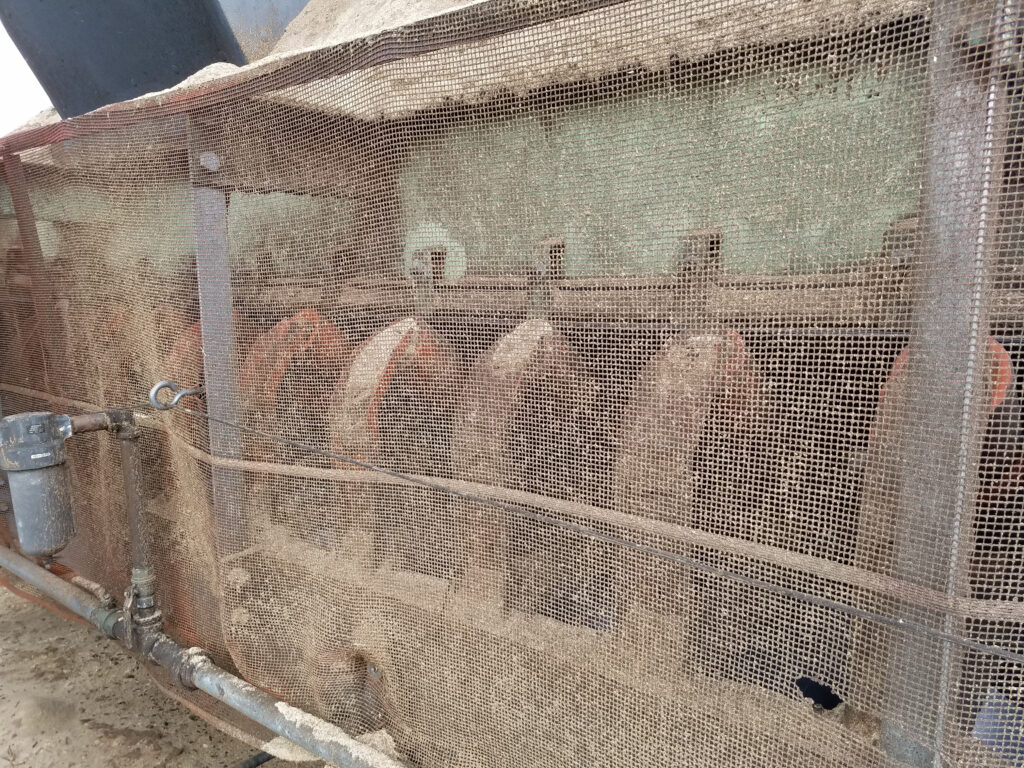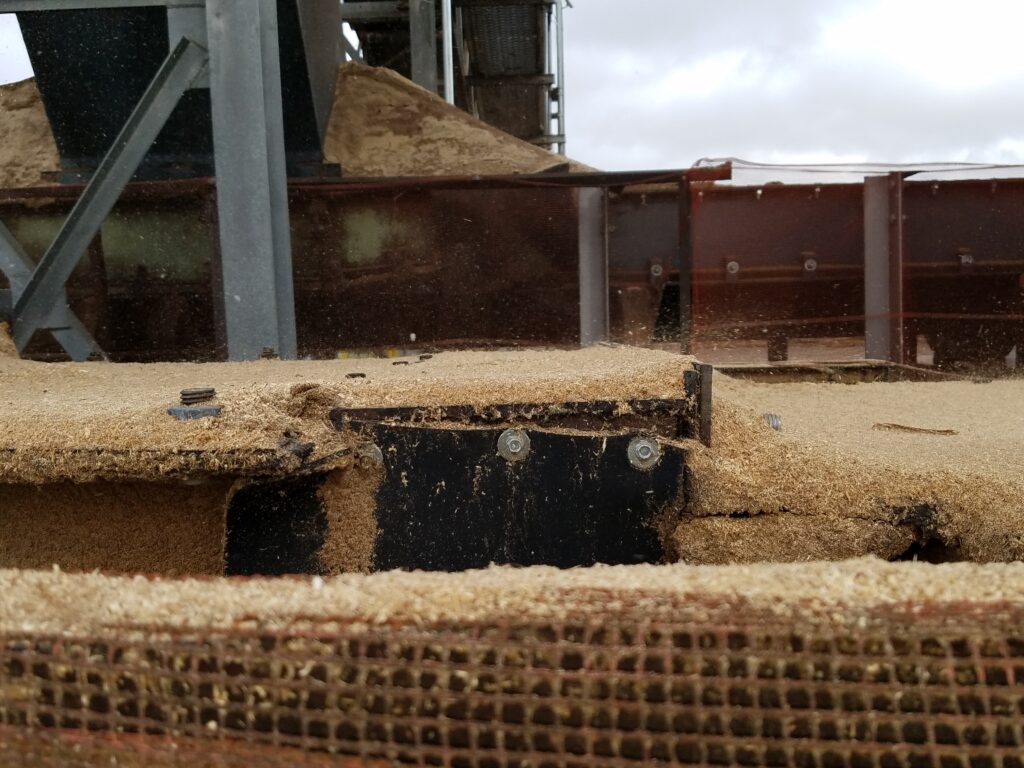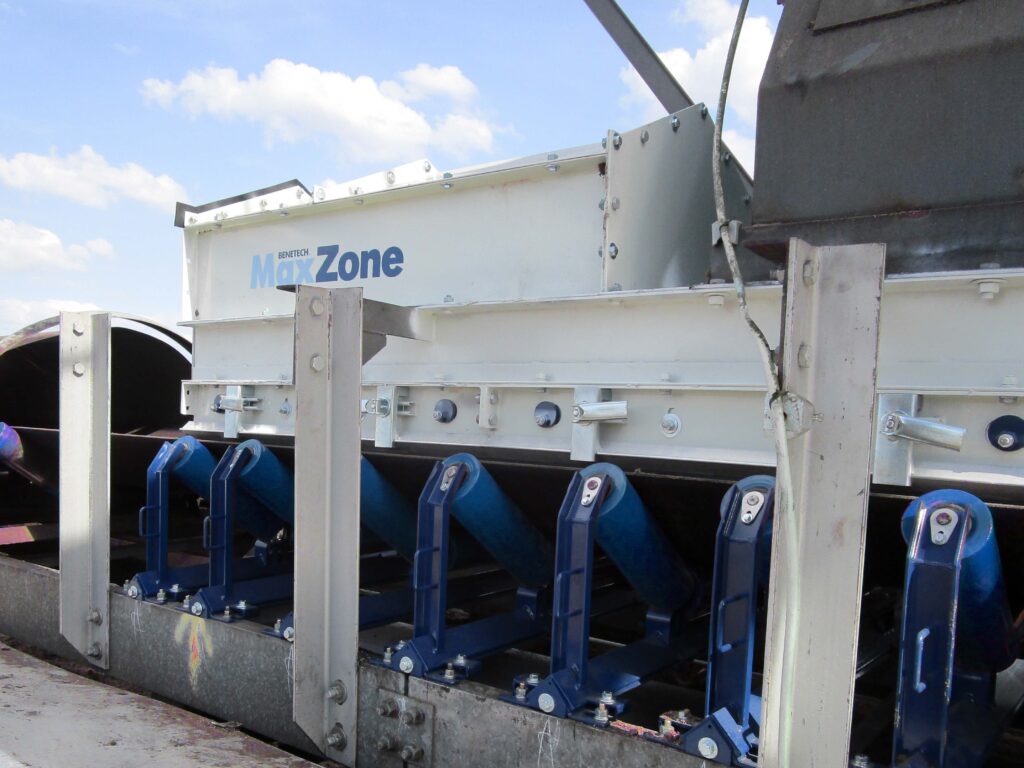Safety by Design
Goal: Minimize Dust and Spillage, Reduce Product Degradation, and Ensure Production is Done Safely.
In safety by design, it is a goal to minimize dust and spillage, reduce product degradation, and ensure production is done safely. New-edge technologies in material handling have made significant improvements in the ability to improve safety while also increasing throughput and enhancing degradation control in the Mining Industry. However, product degradation not only reduces the value of the final product in many cases but can also contribute significantly to losses in other areas such as maintenance and cleanup, component life, and risk to personnel safety in the workplace. This article addresses the issues in the areas of curing the problem at the source, employing a combination of technologies to address the multiple problems where required, and focusing on production done safely. The specific leading-edge technologies that will be highlighted in this article are directly related to the following topics:
- Reduce dust. Lower the risk of explosive and respirable dust exposure. Improve worker safety by design and improve ease of maintenance. Avoid unwanted attention.
- Prevent Spillage. Reduce cleanup and transfer costs. Reduce injury from slips, trips, and falls. Avoid entanglement issues that can result in severe injury or fatality. Minimize confined space entry dangers.
- Improve material Flow. Enhance productivity and earnings. Avoid premature component failure. Eliminate material buildup and plugging. Reduce product degradation and dust creation. Enhance safety, increase throughput, and control product quality.
- Ensure Compliance – MSHA, OSHA, EPA, FM Global
- Life Cycle costing and single-source accountability

Benetech USA and Benetech Global are committed to Total Dust Management. The Benetech Toolbox offers a combination of leading-edge technologies to provide solutions that ensure production is done safely.
The Benetech approach is to cure the problem at the source. This can often require a combination of technologies. Benetech’s proprietary and complementary technologies ensure our capabilities to meet our clients’ safety, production, quality, and throughput needs.
Our global organization consists of a mix of plant professionals, design engineers, and service professionals to provide single-source accountability for effective and innovative solutions provided.
Examples of technologies applied to improve operations at pellet mill operations can be illustrated by recent projects in the pellet industry with leading pellet manufacturing mill owners.
Problem
Pellet production can be an inherently dusty operation using standard conveyors and transfer chutes. The same old thing generally produces the same old results.
Solution
A valiant attempt was made to treat the symptoms of dust and spillage. The improvements made do not treat the problem at the source of the dust and spillage.


Over time, material buildup on adjacent structures and components can create a dangerous situation with a negative effect on conveyor component life as well as a significant risk of fires and possibly explosions given the right set of circumstances.
Maintenance and housekeeping become a very time-consuming, challenging, and dangerous task, as well as the inherent risks to safety and system performance. The regulatory agencies are also a factor and can issue costly citations and have production performance implications that must be addressed.
In this situation, the owner decided to take the bull by the horns and do what was needed to cure the problems at the source. Beyond the noticeable performance improvements, employee safety and a genuine interest in being “good neighbors” were driving factors to improve the situation. The approach of engineering controls to provide “safety by design” and to cure the problems at the source was undertaken.
As can be seen, by some of the images below, dramatic improvements were made that improved the safety and reliability of the equipment and had a very positive effect on overall employee morale.
The MaxZone containment system was used to eliminate fugitive materials from escaping the system at the transfer points as material loaded onto the conveyors. Service and adjustment to internal liners can now be performed externally without confined space entry. Likewise, ”simple slide” idlers supporting the belt can be removed from the side to allow more accessible service, tighter spacing for better belt support, and less downtime required for maintenance. Structural interferences can be easily avoided. Spillage and dust are eliminated.

Proper material flow is accomplished with redesigned transfer chute loading points onto the receiving belt. By maximizing flow characteristics through the entire transfer point, product degradation can be minimized. Another important feature is dust control, as seen with the capability of the modular MaxZone system to be extended vertically or horizontally to achieve the proper volumetric relationship to control airflow velocity within the system so that it is not allowed to discharge in the form of fugitive dust. This is an extremely important feature of “safety by design in a combustible environment.”

As can be seen in the above image, the modular design of the MaxZone system allows excellent versatility for future expansion or modification in the event of future production rate increases. All connections are bolted, which eliminates the need for hot work in the field. This is hugely beneficial when working around highly combustible materials. The bolted design also strengthens the rigid structure by accomplishing both vertical and horizontal gusseting. A load zone that is very stable and does not “shake” or distort when in heavy service is an essential factor to control spillage and fugitive materials from escaping the system.
In conclusion, the end-user at this facility is one of the largest pellet producers in the world. The results achieved were welcomed and complimented by both employees and corporate management. A notable quote from the ownership side – “We can live with this. It’s like night and day.”
Final thoughts – “An ounce of prevention is worth a pound of cure.”
BC Wood Dust Explosions
Babine Forest Products
- Burns Lake, BC – January 20, 2012
- Two fatalities, 20 injured, facility destroyed
Lakeland Mills
- Prince George, BC – April 24, 2021
- Two fatalities, 22 wounded, facility destroyed
- Five serious explosions between 2005 and 2011 with no injuries
WorkSafe BC Findings
- Wood dust was the fuel
- Friction from gear reducers-motors likely ignition source
- Explosions originated in spaces where conveyor systems were receiving and moving wood waste
- Other factors: low humidity, enclosed spaces, and high levels of beetle-kill wood
Posted in Conveyor Belts, Dust Control, and Material Handling


